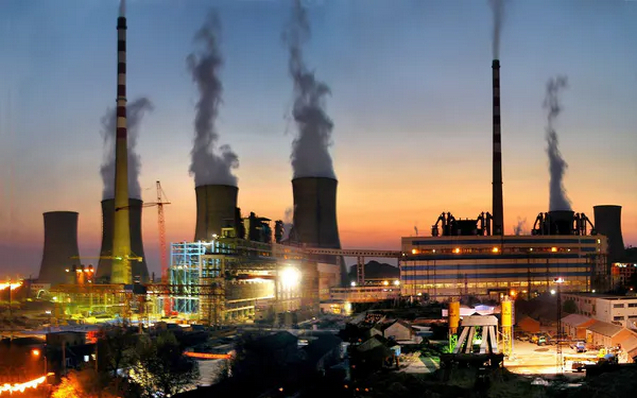|
Authors
|
But let’s start with the pretty good. Intense pre-COP negotiations resulted in a number of substantial commitments in the first week of the meeting.
On day two, there was the Glasgow Leaders’ Declaration on Forests & Land Use, a global pledge to end and reverse deforestation by 2030.
More than 100 countries signed up, covering land containing about 85 per cent of the world’s forests.
The declaration included pledges of about $26 billion of private and public finance.

|
|
COP26 President Alok Sharma speaks at the close of COP26.
Credit: Getty
|
More than 100 countries signed up, representing about 70 per cent of the global economy.
Coal was the focus of day three, culminating in more than 190 countries and organisations signing up to the Global Coal to Clean Energy Transition Statement.
This is aimed at phasing out coal power and ending support for new coal power stations. Signatories included Vietnam, a potential major destination for Australian coal.
A deal has been reached at the COP26 Glasgow climate summit between 197 countries, with coal power being "phased down".
In the second week, after most world leaders had gone home and the negotiators got down to the business of drafting the final statement, a joint announcement from the US and China caught many by surprise.
The US-China Joint Glasgow Declaration on Enhancing Climate Action in the 2020s outlined an agreement to boost co-operation on climate action.
Importantly, “2020s” is mentioned eight times in the body of the declaration, signalling that the world’s two biggest emitters understand the importance of near-term action to avert climate catastrophe.
Emphasis on action “by 2030” is among the most significant themes of the final Glasgow Climate Pact. All countries are urged to “revisit and strengthen” 2030 targets in advance of COP27 in Egypt next year.

|
This sentence alone captures the complexity of the negotiations. On the one hand, this is the first explicit mention of coal and fossil fuels in 26 years of COP declarations and decisions.
On the other, the words “unabated”, “inefficient” and “phase-down” may be viewed as get-out-of-jail-free cards for some fossil-fuel consuming and exporting countries.

|
Analysis by Climate Action Tracker shows that even with the new 2030 pledges, a global temperature rise of 2.4 degrees by the end of the century is a real possibility.
This means catastrophically more severe climate extremes, and sinking prospects, literally, for low-lying nations, including many of our Pacific neighbours.
Another major disappointment is that the developed world fell short of fulfilling a decade-old promise to deliver $US100 billion each year to help poorer nations deal with climate impacts.
So who were the bad COPs in Glasgow? There is one that consistently stood out. Australia.
Perhaps nothing was more symbolic of Australia’s lack of commitment to the goals of the Glasgow COP than the pride of place at the Australian pavilion given to Santos, one of our largest gas and oil companies.
Multiple assessments of Australia’s commitment and actions to reduce dangerous climate change have ranked us at the bottom of the international pack.
The “Australian Way” plan to get to net zero by 2050 is a hotchpotch of creative accounting, claiming credit for emission reduction actions of the states and territories and the previous Labor government, spruiking technology that doesn’t work, and magical thinking about technology that hasn’t been invented yet.
Glasgow summit
|
Everyday Australians and businesses pay a high price for the Morrison government being out of step with the rest of the world.
Not only does Australia continue to obfuscate and delay, we are only contributing about a 10th of our fair share to help poorer nations cope with the climate impacts we have helped cause.
At the end of each COP, the Climate Action Network, an international umbrella organisation of over 1000 groups devoted to increased climate action, presents the Colossal Fossil Award to the country or organisation deemed to have been least helpful at meeting the objectives of the meeting.
No prizes for guessing who got it this year.
Glasgow Climate Summit
|
| Explore |
Links
- COP26 leaves too many loopholes for the fossil fuel industry. Here are 5 of them
- COP26: experts react to the UN climate summit and Glasgow Pact
- Nations reach climate deal at COP26 after compromise on coal
- India criticised over coal at Cop26 – but real villain was climate injustice
- ‘Fragile win’: COP26 Glasgow’s pledge to end coal power weakened in final compromise
- A parade of greenwashing, COP26 was ultimately a betrayal
- President in tears as COP26 strikes hard-fought deal and UN says ‘not enough’
- Morrison government refuses to strengthen 2030 climate target
- Morrison won’t budge on 2030 targets
- (The Guardian) Cop26 Reactions: ‘Rich Nations Have Kicked The Can Down The Road’
- (AU Climate Council) COP26 Ends With Stark Warning: Step Up On Emission Cuts This Decade Aus, Or Pay The Price
- (AU The Guardian) Australia Shown To Have Highest Greenhouse Gas Emissions From Coal In World On Per Capita Basis
- (AU ABC) Government's Emissions Reduction Modelling Draws Researchers' Criticism, Industry Approval
- (USA Washington Post) 2C Or 1.5C? How Global Climate Targets Are Set And What They Mean
- (AU The Conversation) COP26: Why Education For Girls Is Crucial In The Fight Against Climate Change








